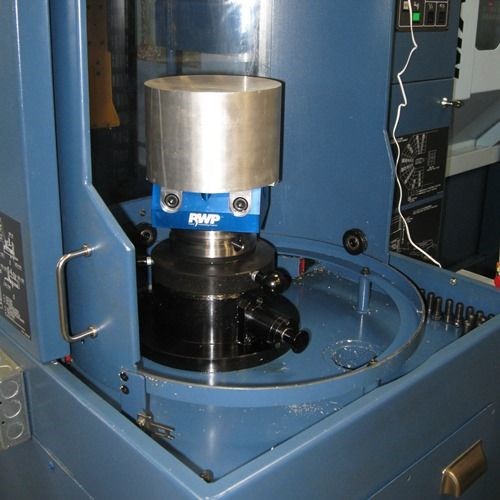Lights-Out Machining and Long-Term Agreements Go Together
The value of a contractual agreement to keep on supplying the same part number to a customer is even greater than many shops realize.
Share





.png;maxWidth=45)
DMG MORI - Cincinnati
Featured Content
View More
Takumi USA
Featured Content
View More
Hwacheon Machinery America, Inc.
Featured Content
View More



Seen here is the raw stock for a cylindrical part that would typically be machined on a lathe. Vanderhorst Brothers runs it on a machining center so that the job can be queued within the pallet system for lights-out machining. The part is held by a dovetail fixture that this shop helped to invent.
Brian O’Rell, president of Vanderhorst Brothers Inc. of Simi Valley, Calif., says one of the keys to his shop’s success can be expressed in three letters: LTA.
LTAs—long term agreements—are so valuable to this machine shop that he is willing to invest considerable time and care in looking for cost reductions he can justify for the sake of quoting attractive prices to customers seeking to enter into an LTA contract.
The value of a contractual agreement to keep on supplying the same part number to a customer is even greater than many shops realize, he says. True, the programming and process engineering all can be performed just one time, and amortized over the cost of the job. That is a real source of savings. But it is also true that the amount of quoting and prospecting that Mr. O’Rell has to do is reduced as long as he has enough LTA work to keep the shop busy. He is happy to pass along this source of savings as well.
Another benefit is this: After the term of an LTA ends, the shop that has been doing the work for all of that time is in the best position to win the work again when a new LTA is signed. Today’s contractual customers will be the shop’s best prospects tomorrow.
Vanderhorst Brothers has invested significantly in lights-out machining using machining centers fed by pallet systems. The shop has realized unattended production to an extent that now goes beyond even what we reported on in this article. The shop runs just one staffed shift, routinely using most of the remaining hours in the day to run jobs that were queued up while employees were in the building.
Lights-out machining and LTAs go together, says Mr. O’Rell, because the evening hours are cheaper than the hours when employees are present. He therefore gives the benefit of this economy to his contractual customers by running LTA jobs through the night.
Related Content
-
Same Headcount, Double the Sales: Successful Job Shop Automation
Doubling sales requires more than just robots. Pro Products’ staff works in tandem with robots, performing inspection and other value-added activities.
-
Cutting Part Programming Times Through AI
CAM Assist cuts repetition from part programming — early users say it cuts tribal knowledge and could be a useful tool for training new programmers.
-
Four-Axis Horizontal Machining Doubles Shop’s Productivity
Horizontal four-axis machining enabled McKenzie CNC to cut operations and cycle times for its high-mix, high-repeat work — more than doubling its throughput.





















.png;maxWidth=150)








.jpg;maxWidth=300;quality=90)





